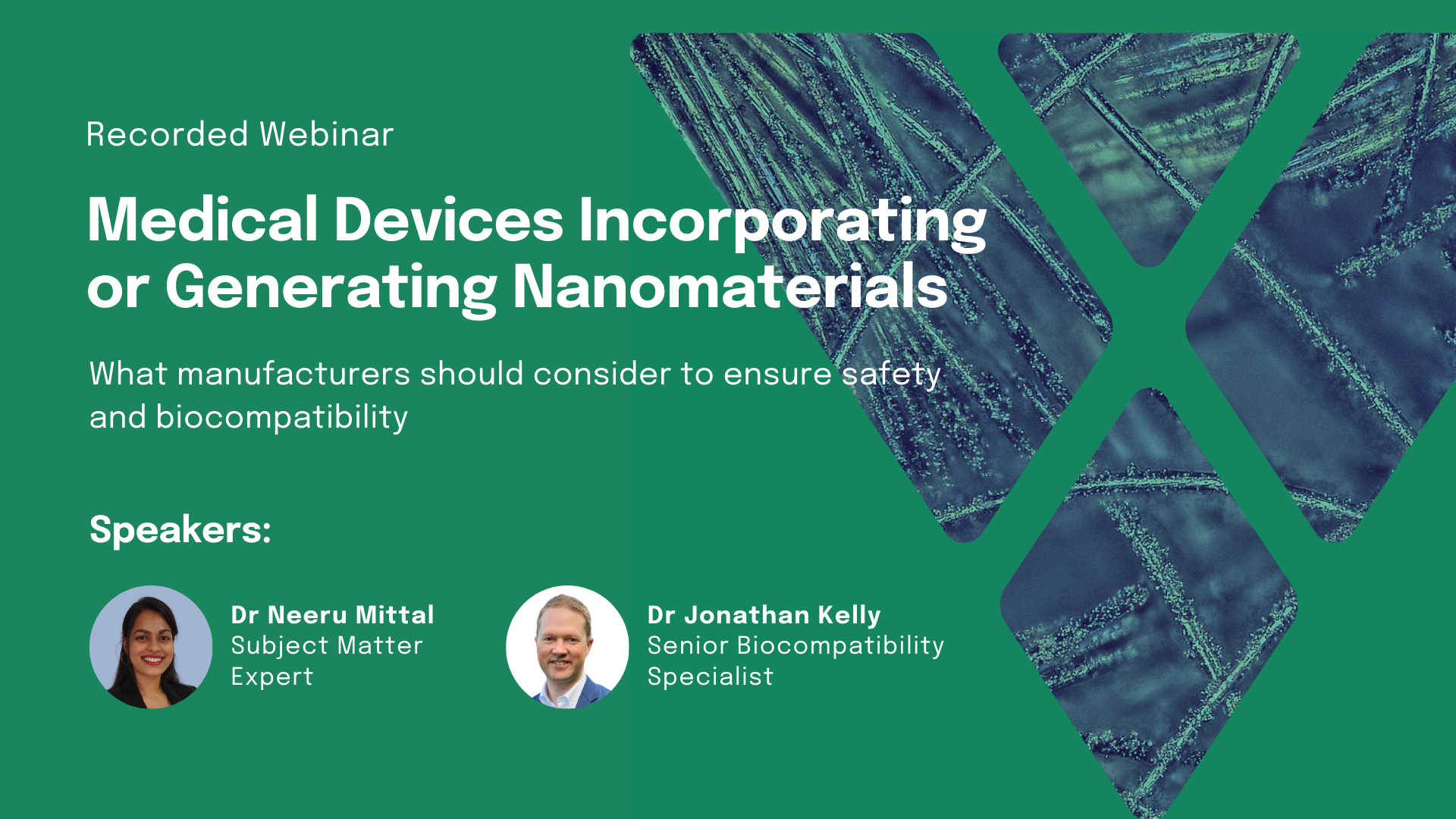
Medical Devices Incorporating or Generating Nanomaterials
What manufacturers should consider to ensure safety and biocompatibility
The concept of nanomaterials and their possible applications was first introduced by Richard Feynman, which earned him the Nobel Prize in 1959. Fast-forward to today, nanomaterials have permeated all aspects of our daily lives, including their utilization in medical devices. Offering the potential to enhance device functionality and diagnostic outcomes, these tiny particles (10⁻⁹ meters) have the power to revolutionize healthcare.
However, their application in medical devices presents a unique challenge: ensuring their safety and compatibility with the human body, within a context of lack of standardized testing protocols, limited available literature data, and uncertainty regarding exposure, among other factors. This is crucial because nanomaterials can have sizes similar to structures at the subcellular level, and thus can interact with such structures, presenting serious biological risks.
In this recorded webinar, Dr Neeru Mittal and Dr Jonathan Kelly from Veranex provide you with:
- A basic understanding of biocompatibility
- An introduction to the diverse array of nanomaterial types and their applications within the realm of medical devices
- Principles of biological safety evaluation of medical devices incorporating or generating nanoparticles
Please submit the form to view the webinar:
